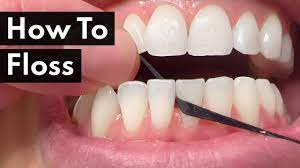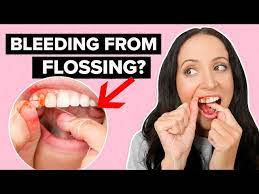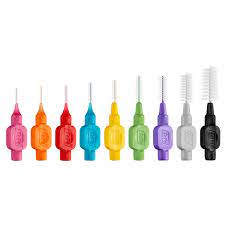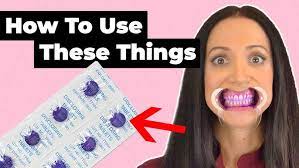The friendliest DENTist in Tauranga!
Gardens Dental merged with Holmes Dental in July 2025 and we are really looking forward to seeing you at our Mount Maunganui clinic!
Dental Prevention
Best oral hygiene routine:
morning routine
- Brush your teeth and gums at a 45 degree angle for 2 minutes with a fluoridated toothpaste eg. Colgate total
- Spit out and do not rinse your mouth after brushing
evening routine
- Brush teeth and gums with Clinpro 5000 toothpaste if higher risk for cavities or a regular fluoridated toothpaste e.g Colgate total
- Floss: make a C-shape and hug your teeth
- Interdental brush if recommended: fattest brush between the spaces six times (reuse the brushes)
- Brush for 30 seconds with toothpaste again
- Do not use mouthwash
- Spit out and never rinse
DAILY TOOTHBRUSHING
The most important preventative thing to do each day is to clean your teeth morning and night, to remove the plaque (food and bacteria) that has built up from eating that day. If plaque is left on teeth, over time, a hole or cavity is created which when sufficiently large will cause pain.
It is best to wait 20 minutes after eating before brushing your teeth. They are in a weaker demineralized state, susceptible to damage due to the acid that is created when bacteria are breaking down food in your mouth.
The best toothbrushes are a small-headed toothbrush, either soft or medium bristles. Nobody needs to use a hard-bristled brush. Gum disease patients significantly benefit from a sonic-powered electric toothbrush. We stock these and the replacement heads at our practice.
Here is a video which shows how best to brush your teeth at a 45 degree angle, click here: manual toothbrushing video or electric toothbrushing video.
FLUORIDATED TOOTHPASTE
Brushing for 2 minutes in the morning and evening, with a fluoridated toothpaste strengthens your teeth against the foods and drink you eat, e.g. Colgate Total.
If you are higher risk to cavities or have multiple areas of demineralisation or teeth we are keeping under watch, we recommend using Clinpro 5000ppm which we stock at our dental practice.
Clinpro 5000 offers increased protection against acid attack from decay-causing bacteria in the mouth and this will make your teeth stronger against the foods you eat. As your saliva production is reduced overnight, your teeth would benefit the most from 5000ppm toothpaste as your evening toothpaste, if you are prone to cavities.
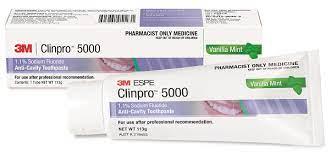
FLOSSING
Flossing your teeth daily will clean between the tight tooth contacts to prevent decay, cavities and gum disease. It can help stabilise a pre-cavity where food is getting stuck.
Here is a great flossing video to explain the C-shape you are trying to create and how you hug your teeth with floss to remove the 40% of plaque you will miss if you only brush your teeth; click this flossing video.
I prefer tape floss to wind around my fingers to hug the teeth over using a floss pick. This Satin floss tape from Oral-B is my favourite to use every night. It is tape so is flat and hugs the teeth really well to remove food, plaque and biofilm. You can buy this floss from a pharmacy.
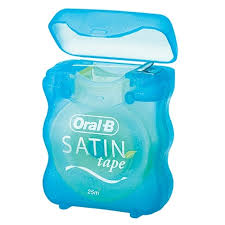
Do not ignore your gums if they are bleeding! They need help through flossing and interdental brushing to remove the bacterial plaque.
It takes 10-14 days of daily flossing for your gums to be strong and healthy and stop bleeding; see why by clicking here: how to stop bleeding with flossing!
It is tricky to clean in between your back teeth. Best practice is to nearly close your mouth so you can manage to floss as your cheek will now be floppy not tight against the teeth stopping you accessing this important part of your mouth. Click below for tips!
If you have a retainer wire behind your upper or lower teeth, you need to clean in between these teeth too. Here are some great tips on the video below explaining how best to do this: using a floss threader with floss, or interdental brushes is great. Click below for tips and tricks:
If you prefer to use a flosspick over string/tape floss that wraps around your fingers, ideally you need to put a bend on the flosspick to hug the teeth one way and then reverse. See this video for more information:
INTERDENTAL CLEANING
Patients with gum disease or larger gaps between their teeth also need to use interdental brushes daily to avoid progression of gum disease into periodontitis.
Use the fattest brush between the spaces six times to clean both sides of the teeth gap. You can rinse and reuse these brushes until the bristles wear out.
Here is a video on how to use these brushes: click this interdental brushing video.
See our Gum Disease page for more information on how to prevent this.
PLAQUE DISCLOSING TABLETS
Once a week, you can plaque disclose your teeth. Chewing a tablet and licking your teeth all over with the liquid, stains plaque bright purple making it easy to see where you are missing brushing / flossing / interdental brushing. This is a great test for your oral hygiene routine. If you ensure you remove all the purple stain, then you will greatly reduce the chance of you getting cavities and gum disease.
Here is a video on how to use the tablets, click here: plaque disclosing video
drinks
Fizzy or energy drinks are highly sugared and caffeinated, which causes poor concentration, increases addiction to sugary drinks and cavities in your teeth due to the combined acid and sugar content. Plain tap water is your best friend for your teeth as it cannot cause decay! Carbonated water or sparkling water, even from soda-streams, is a mild acid, which can damage your teeth even though it is has no sugar content.
Acid erosion from any carbonated drink softens the outer layer of the teeth making it more susceptible to breaking down over time.
Here is a video about how energy drinks damage your teeth, click here: what energy drinks do to your teeth.
We recommend to avoid or limit these acidic drinks as they will demineralise your teeth which is irreversible: lemon water, smoothies, kombucha, energy drinks, fizzy drinks, Coke Zero or equivalent, any juice including fresh juice, sparkling water and black coffee. If you have these drinks we would recommend using a reusable straw to bypass your teeth.
sugarfree chewing gum
Chewing gum can help neutralise the acid produced in your mouth from eating and drinking. If you chew gum for 15 minutes after eating a snack or a meal, this will get the pH level of your mouth back to neutral which means your teeth are not in a demineralised state.
Over-chewing gum for a long time can lead to jaw problems so 15 minutes is a good amount of time.
lollies
Eating a bag of lollies is not something we recommend, but frequency is key in accelerating decay in your mouth. If you ate a bag of lollies at once, this is one sugar and acid attack on your teeth; it takes 20 minutes for the saliva in your mouth to neutralize to ph7. If you ate one lolly every 5 minutes for an hour, this is much worse for your teeth as they are decaying over a much longer time. It is better to treats all at once rather than spreading them out.
TOP TIPS!
Snacking of any food damages your teeth the more times a day you eat.
Regular recall appointments are scheduled on a low, medium or high-risk maintenance plan. Low risk patients are seen every two years and may have a hygiene clean at 12 months. Higher risk patients such as people with gum disease or multiple early cavities or heavily filled teeth are seen 4-6 monthly by our hygienist for gum disease prevention, and annually by our dentist for prevention of progression of dental problems.
PATIENT ASSESSMENTS
During a new patient assessment, or recall appointment, we assess your:
- Jaw joints, muscles that move your jaw, lymph nodes and glands under your chin and neck
- Soft tissues in your mouth to check for any abnormal changes such as red or white spots, on the inside of your cheeks, lips, tongue, under your tongue, tonsils and the roof of your mouth. This is to assess for oral cancer and other conditions that may present in the head and neck.
- Teeth for decay, cracks, condition of current fillings or crowns, decay around old fillings, defective or chips, using air to dry the teeth, a mirror and a probe
- Gums to check for gum disease such as bleeding gums, calculus, pockets using a periodontal probe. 4mm pocketing or more is a sign of gum disease that requires treatment and long-term ongoing maintenance to achieve health.
- X-rays are taken to assess the condition of the current fillings, any decay, how close the filling or decay is to the nerve of the tooth. Subsequent x-rays may be required to assess the wisdom teeth or multiple heavily filled teeth; these are either taken with more small x-rays with a close-up view of the root, or a full mouth panoramic x-ray.
- Photographs are taken of any teeth the dentist needs to take a close eye on and compare if there are any changes at recall appointments; further treatment may be required.
- A treatment plan is given to all patients that require further work with costs per item displayed. There are always a variety of options for each tooth, whether it be doing nothing, or doing something that lasts a short, medium or the longest time. Our treatment plans are tailormade for every patient and can be modified if circumstances change.
- Hygiene recommendations for optimal gum health maintenance will also be advised in the treatment plan whether they are 3, 4, 6, 9 or 12 monthly.



